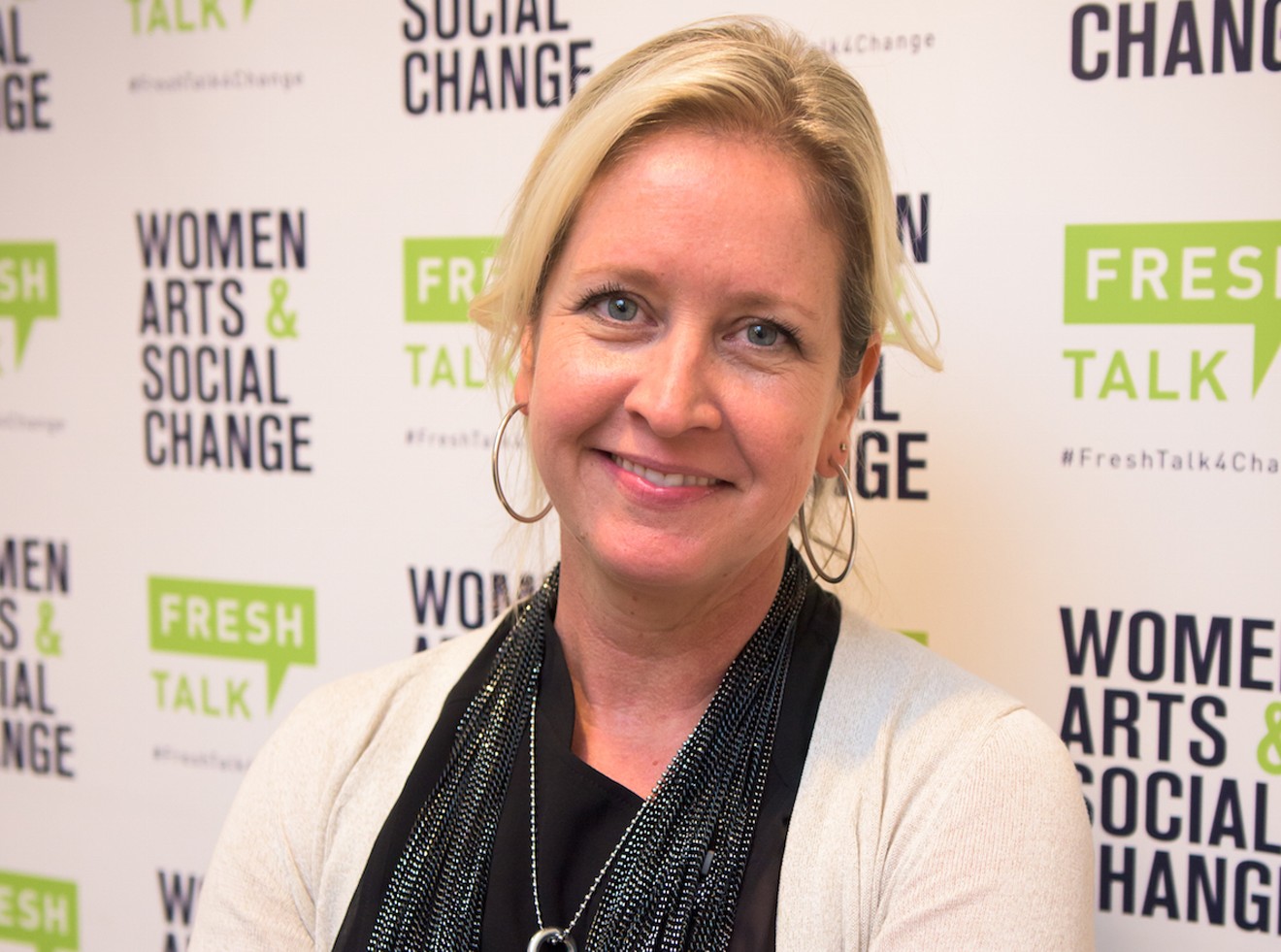Influential arts nonprofit Locust Projects has appointed a new executive director. On the cusp of a momentous anniversary — the space will turn 20 in 2018 — Lorie Mertes will replace Chana Sheldon, who was at the helm for eight years.
Mertes tells New Times she's eager to tackle the challenges ahead. "I wanted to help run and shape a space again, to help artists realize their vision, help them experiment and deviate from traditional experiences with art," she says, anticipating her move from museum direction back to her roots in curation. (She was most recently the director of public programs at the National Museum of Women in the Arts [NMWA] in Washington, D.C.)
"My experience at the NMWA was kind of a swerve, as it isn't curation," she says. She also recalls the circumstances that took her to the museum, which trace back to her experience at the Miami Art Museum (MAM), now Pérez Art Museum Miami (PAMM), in the '90s. "I knew the director of the Women's Museum from when I was at MAM. We had an exhibition of Latin American women artists she was curating, and their Frida Kahlo painting dropped out," she recalls. "I asked her to reconsider, and she said, 'No way — it's our most important painting.' So, naturally, the first person I called when I got to D.C. was her."
Mertes got her start in a Miami art scene very unlike the one we know today. “I started working at Jason Rubell Gallery in Palm Beach,” she says. “We were both fresh out of college, and he was showing some of the best contemporary artists of our time, and it was amazing. In those days, there was not a burgeoning contemporary art community. We found ourselves in an interesting place. What we were doing was really out there for the community.”
From Rubell's gallery, Mertes was asked to work for the nascent MAM. “I was just sort of thrown into the mix and got to curate shows and learn on the job. It was completely organic and a really extraordinary opportunity and moment,” she remembers fondly. “I was there for 12 years and went from being the junior curator to being the director for special projects.”
Throughout Mertes' career, she's advocated for women in art. "It's a conversation that comes back around every ten or 15 years. I remember because I was at MAM and we got a slew of woman-focused shows. There was a moment there in the mid-'90s," she says of the cyclical nature of social change. "I think the internet is a big part of the advocacy for issues and ideas, and gender representation is one of them. I think there is a moment currently, and I think we'll see more longevity and a deepening of the conversation."
PAMM is an example of the raucous change that has propelled the Miami art community forward. Regarding the MAM collection's new home, Mertes is appreciative: “The PAMM building is fantastic. I loved seeing some of the works I helped bring into the collection hanging on those beautiful walls. From the Fernanda Cardosa pieces to Ruben Torres Llorca, there are so many beloved works from over the years. Seeing that work again in a new context, everything just feels elevated.”
Reminiscing about past curation inspires Mertes to consider the effect her new position could have on Locust. "I want to maintain the spirit of that laboratory of ideas, of creative expression and supporting artists," she says. "We're going to amplify every aspect of what Locust does and further build a community of support for emerging artists of our time."
Despite a presidential administration that seeks to slash arts funding, Mertes is optimistic. "Independent spaces can be more flexible, more responsive to the moment of time we live in. They can get to the heart of what we're all thinking about and maybe help us to process, help us change our own attitudes and behaviors. There's more connectivity possible in those smaller spaces,” she says. “I have faith that art is essential; ideas are essential. Even under threat, the arts do prevail. Culture prevails.”
Mertes will step into her new position in early May. Looking ahead, she's particularly excited about a later exhibition she has planned: Detroit-based duo Roofoftwo's "Whithervane," a collection of 21st-century weathervanes. Shaped like headless chickens, the vanes point away from the direction of bad news, as determined by analysis of internet articles. The vanes also glow various hues of the Terror Alert color code. That exhibition will open in the fall and remain on view through Art Basel.
[
{
"name": "Air - MediumRectangle - Inline Content - Mobile Display Size",
"component": "19274298",
"insertPoint": "2",
"requiredCountToDisplay": "2"
},{
"name": "Editor Picks",
"component": "17482312",
"insertPoint": "4",
"requiredCountToDisplay": "1"
},{
"name": "Inline Links",
"component": "18711090",
"insertPoint": "8th",
"startingPoint": 8,
"requiredCountToDisplay": "7",
"maxInsertions": 25
},{
"name": "Air - MediumRectangle - Combo - Inline Content",
"component": "17482310",
"insertPoint": "8th",
"startingPoint": 8,
"requiredCountToDisplay": "7",
"maxInsertions": 25
},{
"name": "Inline Links",
"component": "18711090",
"insertPoint": "8th",
"startingPoint": 12,
"requiredCountToDisplay": "11",
"maxInsertions": 25
},{
"name": "Air - Leaderboard Tower - Combo - Inline Content",
"component": "17482313",
"insertPoint": "8th",
"startingPoint": 12,
"requiredCountToDisplay": "11",
"maxInsertions": 25
}
]











